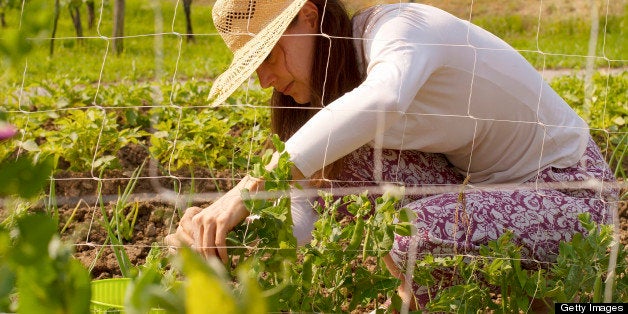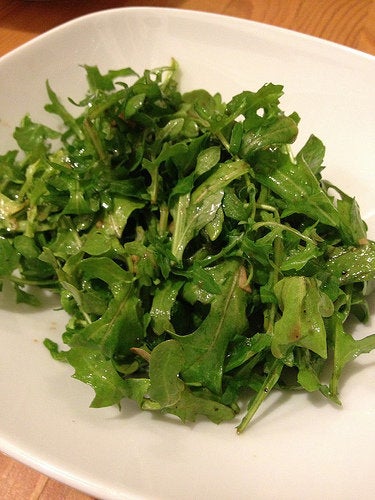
People celebrate Earth Day in many ways: Some clean up their local park, others work on educational efforts or even donate to their favorite environmental charity.
But here's a novel way to help the health of the planet while also giving your own health a boost. "With Earth Day upon us I think we might think about what locally grown means and remember that nothing is more local than what grows in your own garden," says Rose Marie Nichols McGee of Nichols Garden Nursery in Albany, Ore.
Whether you're growing a few herbs on the windowsill of your studio apartment or putting in rows of veggies in your multi-acre backyard, cultivating your own grub is a great way to cut down on your carbon footprint, reduce pesticide load and encourage a produce-heavy diet, full of easy-to-grow, healthy-to-eat crops like microgreens, tomatoes and herbs.
"You can grow a lot of tasty produce in a small space if you're careful about picking the right crops and giving them the right conditions," says Roger Doiron, founder of Kitchen Gardens International. "A good rule of thumb is that you can grow about a half-pound of vegetables in a 1' x 1' space. My wife and I managed to do a lot more than this a few years back when we did the garden math."
Intrigued? Read on for our top tips on growing the healthiest and most successful kitchen garden yet:
Use Organic Soil And Fertilizer
"What you put in your soil goes into your food and eventually your body," says Robynne Heymans of Sprout Home, a garden and plant store in New York. "Fertilizing helps keep the plant healthy and encourages it to produce more food -- it's especially important in containers because the soil is not being traveled by earthworms and beneficial bacteria the way the earth is. You can also use a micrconutrient rich fish or seaweed emulsion each time or every other time you water."
Mulch
Use at least one inch of mulch in any containers to help keep the soil moist and to add nutrients, which is especially important during the summer and on a rooftop.
Know Your Sun
"Fruiting plants need direct sunlight to produce fruit -- at least six to eight hours every day," says Heymans, although she adds that the more sun, the better. Part-sun plants need between four and five hours. But if you're planting inside, consider obstructions to the sun: tress outside the window can curb sun exposure, for instance.
Water And Fruit
Think about the fruit you eat -- it's mostly water, right? That means you've got to keep your fruiting plants especially well watered. Fruiting plants will need water every day, although they might need it twice a day during the height of summer.
"A plant stressed for water will not have the energy to produce," Heymans says. "Checking the soil daily is the best way to know if your plant is getting enough water. The soil should feel like a well wrung out sponge -- soft and slightly moist."
Live In A City? Try Containers -- And Steer Clear Of Space-Hogs
"In New York City we recommend using raised beds or containers for planting edibles due to the trace amounts of lead, construction debris, chemicals in the ground," Heymans says.
"For an urban yard, you'll want to start first with a soil test to make sure there's no lead," Doiron says. "If you get a clean bill of soil health, you can plant pretty much anything although you might want to steer clear of the most space-hungry crops like zucchini, melons and potatoes."
Think Outside The (Garden) Box
"In a former life when I was living in Brussels, I grew tomatoes, herbs and salad greens on a rooftop and on windowsills. All of them will grow happily in containers if they have enough sun, water and fertile soil," Doiron says. "For a window box or sill, I would recommend herbs and possibly salad greens. For a balcony that gets at least six hours of sun, you can do all the above plus tomatoes and peppers."
Grow Leafy Greens
"I think gardeners get a tremendous benefit from growing kale and other vegetable greens," says McGee. "If you grow kale and other mustard greens you harvest from the same plant over and over again.
What's more, McGee says, "Greens are often sprayed for insects and by growing yourself you can take control. Often all that's needed to get rid of aphids is a hard spray of water from the hose. Also the home gardener is in a position to encourage beneficial insects and avoiding the monoculture so prevalent in commercial farming."
Choose Foods You Can Preserve
Foods that make good jam, pickles or freeze well are great options to help feed you all year round. And it's easy to find varietals that produce in large amounts. Take for example, strawberries: "Fresh fully ripened strawberries are incredibly delicious and fragrant. Today we can can select from varieties that put out a big crop at once for making jam or freezing or perhaps a day length neutral variety like Tri-Star or Seascape, which produce small amounts through the season are more to your needs. You can walk out to the garden every summer morning a drizzle and drop a few berries into your breakfast bowl."
